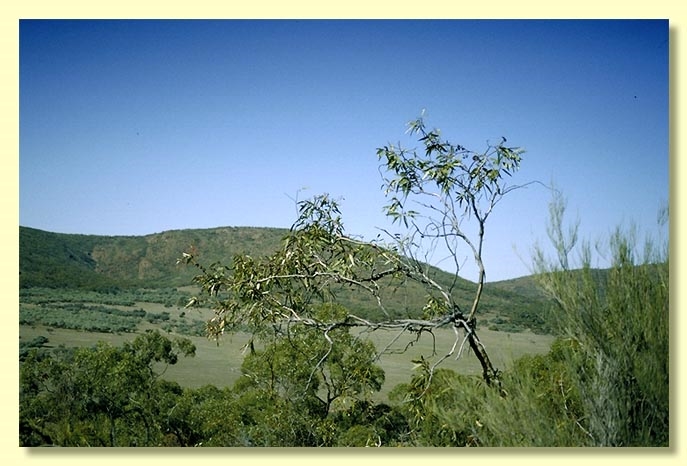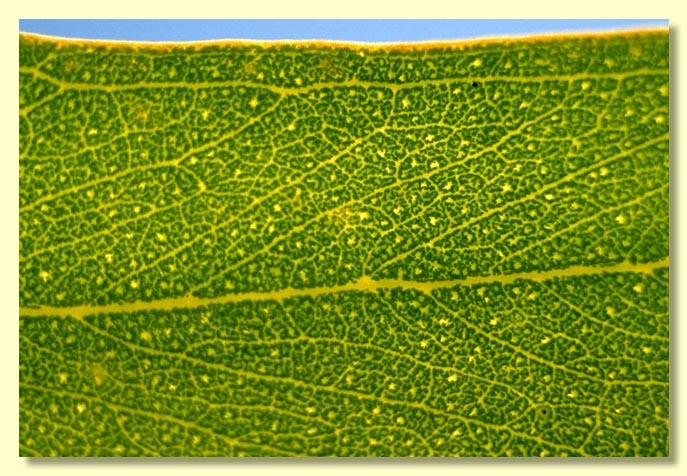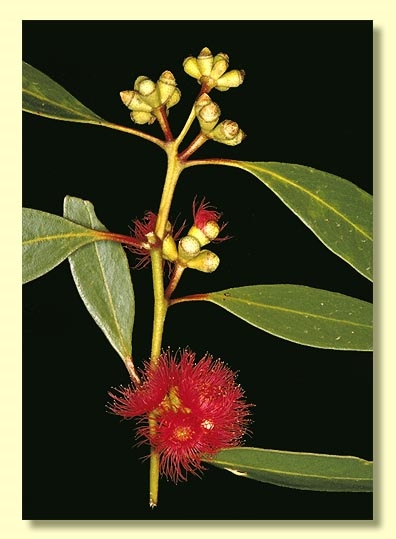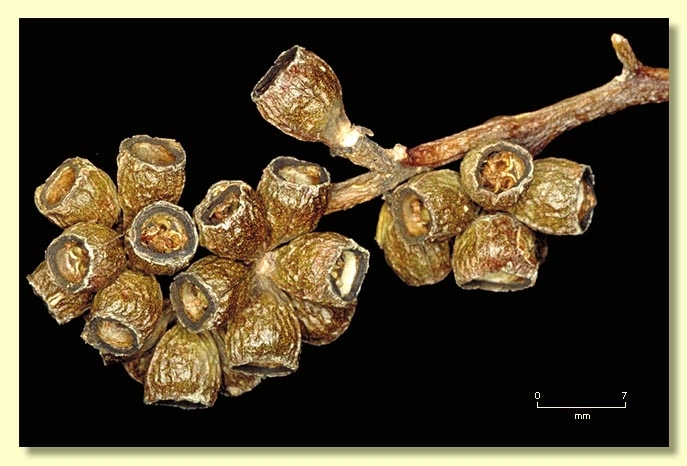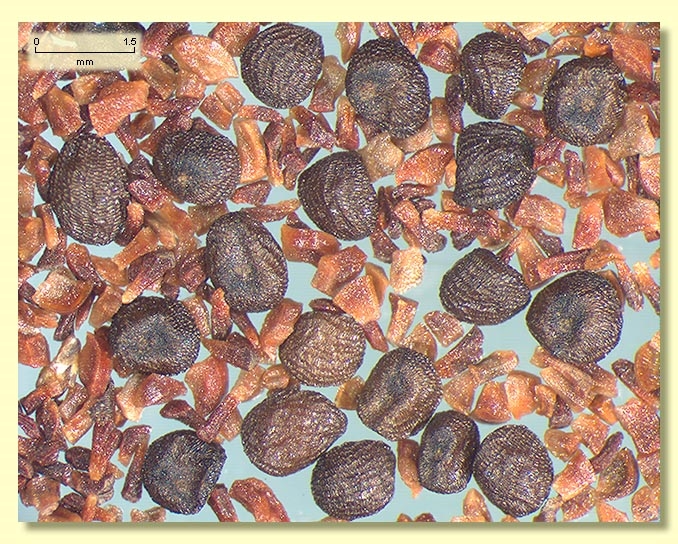Euclid - Online edition
Eucalyptus lansdowneana
Eucalyptus | Symphyomyrtus | Adnataria | Apicales | Buxeales | Continentes
Slender mallee to 6 m tall, often arched and twisted. Forming a lignotuber.
Bark rough and grey, flaky or fibrous for up to 2 m of stems, or smooth throughout and coppery to grey or greenish grey or creamy brown, shedding in short strips.
Juvenile growth (coppice or wild seedling to 50 cm tall) stems round; juvenile leaves always petiolate, opposite for few nodes then alternate, ovate to broadly lanceolate, 7–10 cm long, 2.5–3.5 cm wide, dull, grey-green at lower nodes but becoming green, glossy.
Adult leaves alternate, petiolate; blade lanceolate, 8.5–15.5 cm long, 1.5–2.7 cm wide, base tapering to petiole, margin entire, apex acute, glossy, mid-green, side-veins at an acute or wider angle to midrib, reticulation dense, intramarginal vein remote from margin, oil glands obscure or few and intersectional.
Inflorescence terminal compound with some single umbels in upper axils, peduncles 0.3–1.4 cm long, buds 7 per umbel, subsessile or on pedicels up to 0.3 cm long. Mature buds ovoid, slightly angled, 0.7–0.9 cm long, 0.4–0.7 cm wide, scar absent (both opercula shedding at flowering, either as a single unit or as two separate opercula), operculum conical or rounded and apiculate, stamens inflexed, staminodes present (outer stamens lacking anthers), fertile stamens with anthers oblong to more or less globoid, adnate, basifixed to filaments that taper slightly, dehiscing by short slits (non-confluent), style long, stigma blunt to pin-head shaped, locules 4 or 5, the placentae each with 4 vertical rows of ovules (the rows not clear basally). Flowers red to pink-red.
Fruit sessile or with pedicels to 0.1 cm long, barrel-shaped, 0.9–1.2 cm long, 0.7–1.1 cm wide, often with 3–5 shallow longitudinal ribs or lines, disc descending, valves 4 or 5, enclosed.
Seeds blackish-brown, 1–2 mm long, ovoid or flattened-ovoid, dorsal surface shallowly reticulate, hilum ventral.
Cultivated seedlings (measured at node 10): cotyledons reniform to ± oblong; stems rounded to square in cross-section; leaves always petiolate, opposite for 3 to 7 nodes then alternate, ovate to lanceolate, 6.5–12 cm long, 2.5–4 cm long, dull, grey-green at lower nodes but becoming glossy, green, firm and thick by nodes 9–11.
Flowering has been recorded in March, August, September and October.
A slender emergent mallee endemic to South Australia, of very restricted distribution on rocky outcrops in the Gawler Range of northern Eyre Peninsula. The stems are partly rough-barked or smooth, the adult leaves are very glossy, green and flowers red.
E. lansdowneana is a very distinctive species because of its habit and flower features and should be confused with no other, especially within its natural range.
Another species, E. albopurpurea, was originally described as E. lansdowneana subsp. albopurpurea; however, this indicated a closer relationship than actually exists between the two. E. albopurpurea has all stamens fertile, a range of flower colour forms, generally smaller buds and fruit and a coastal distribution on the southern Eyre Peninsula and Kangaroo Island.
Eucalyptus lansdowneana belongs in Eucalyptus subgenus Symphyomyrtus section Adnataria (the boxes) because the buds have two opercula, ovules are in four rows, seeds are flattened-ovoid, cotyledons are reniform, and anthers are rigid on the staminal filaments. Within section Adnataria, E. lansdowneana is part of a subgroup, series Buxeales subseries Continentes, further distinguished by having terminal inflorescences and buds that retain the outer operculum until flowering time when both opercula are shed together. Most species in this group are from eastern Australia and have all stamens fertile. Two species, E. lansdowneana and E. petraea, however, have a more westerly distribution and are unusual in having some sterile outer stamens (staminodes) as well as inner fertile stamens. E. petraea is restricted to the goldfields region of Western Australia and has a more typical mallee habit, smaller, white flowers and is only found associated with granite rocks.

